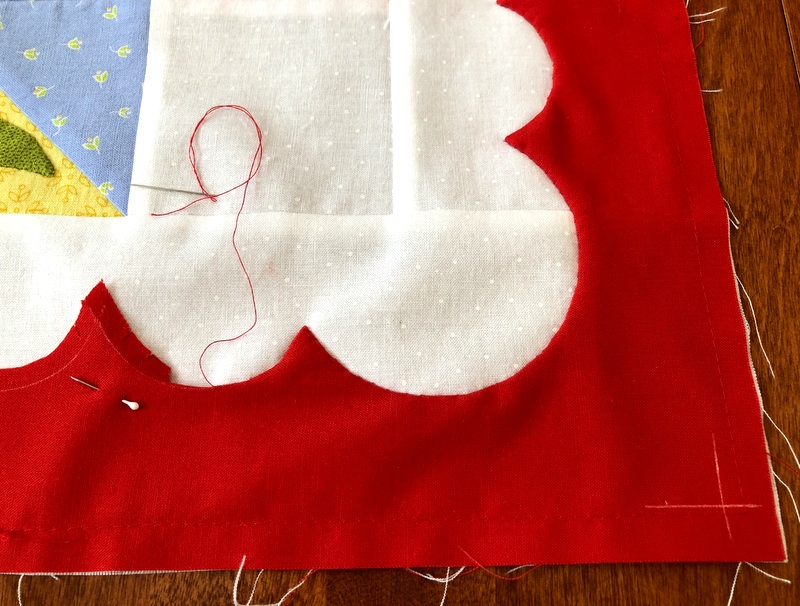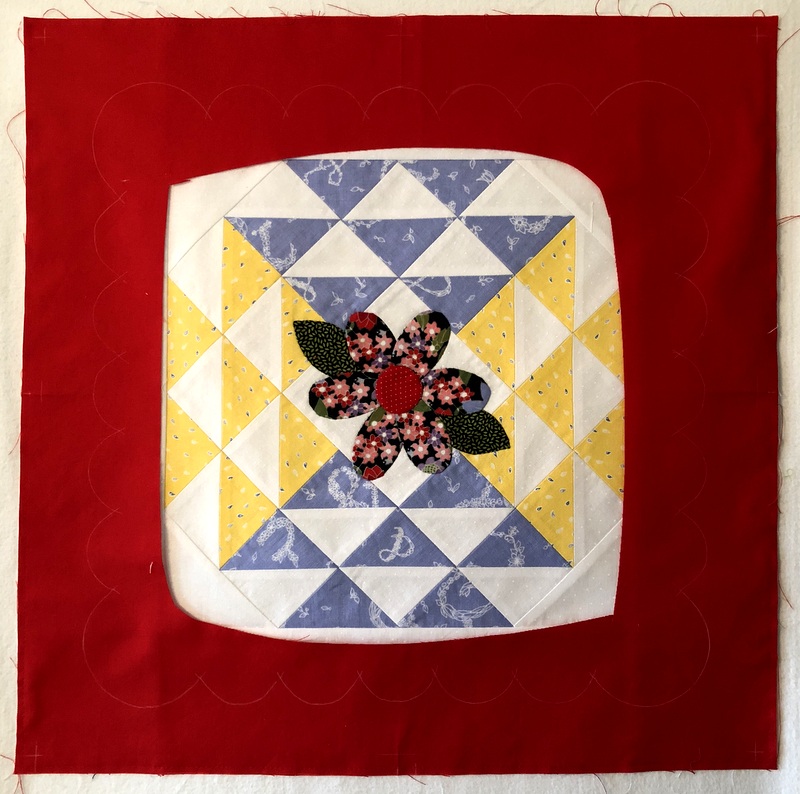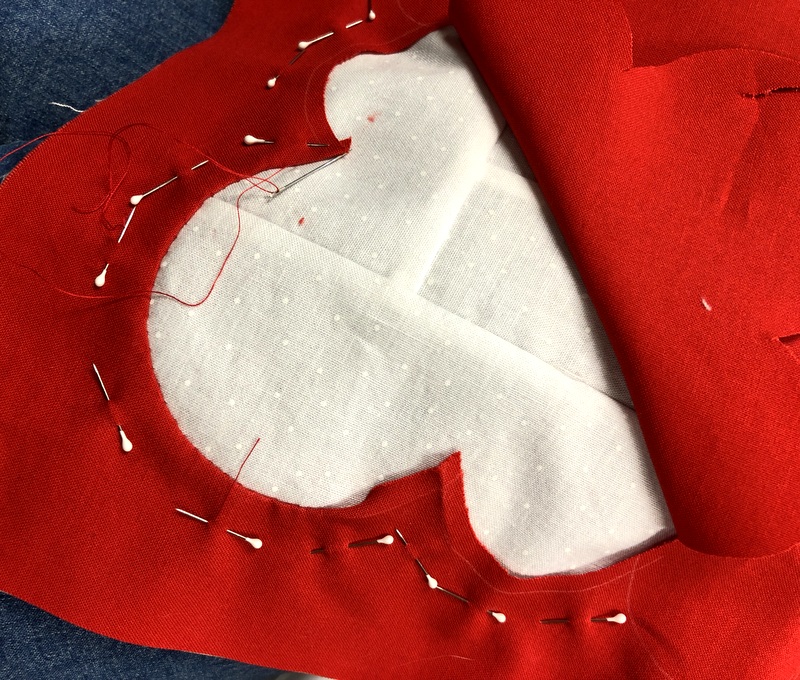. . . the Christmas decorations are getting putting away. Little by little the days are getting longer. And little by little I’m making progress on my needleturn appliqué on Hazel’s Diary Quilt, following the directions in Shelly Pagliai’s book A Simple Life: Quilts Inspired by the ’50s.
Some days are better than others. I run the gamut from feeling like my appliqué skills are visibly improving to becoming frustrated when a curve doesn’t turn out as smoothly as it should. When that happens, I simply put the appliqué aside and do something else. And I remind myself that when the finished quilt is laundered, its soft puckery texture will disguise a multitude of imperfections.
I thought you might be interested in a little change I made to the way the blocks are prepared for the reverse appliquéd red scalloped frames. In the photo below I have drawn around the plastic template with a white pen to mark my scallops:

Did you happen to notice the template doesn’t go all the way to the edges of the red fabric? That’s because I added an extra half inch all the way around. The red square measures 19½” instead of 18½”. I also added a half inch to the sashing strips around the pieced block it goes on top of so it measures 19½” as well.
I discovered with my first scalloped frame that no matter how carefully I pinned and stitched, the layers shifted a little during the appliqué process resulting in a block that didn’t measure 18½” square because the raw edges weren’t exactly even. The solution? Make the block bigger and trim it to size after the scalloped frame is attached.
This is what I did on subsequent blocks. With the pieced block and the frame in place, I machine basted around the outside close to the raw edges to hold the layers together. Next I cut out a big square in the center (yielding a generous scrap of red fabric for another use), revealing the pieced block beneath:
Now I’m ready to trim close to the drawn lines on a couple of scallops and start hand stitching around the block. Instead of using lots of appliqué pins to hold the red fabric in place, like I did on the first block . . .
. . . I can use just one or two pins to hold the layers together right next to the appliqué line because the basting around the outer edges (a little hard to see in the next photo) is holding the frame in place:

When I’m done appliquéing the frame, I’ll take out the basting and press the red scalloped frame nice and flat. It matters not that the edges of the two layers aren’t even because I can measure a perfect 18½” square, draw around the block on the cut lines, machine baste inside the cut lines to hold the layers together, and then trim the block on the cut lines.
When it’s time to sew the individual blocks together, they will all measure exactly 18½” square and the two layers of each block will be held fast by the stitching.



Good thinking! Margin is a good thing.
It will be more pleasant to stitch with fewer pins in the way.
Looking good.
Oh my goodness!! You are indeed committed. What a labor intensive project. It is without a doubt beautiful and an heirloom. Kudos to having the wherewithal to do it!!
after i followed your labor of love with these blocks i bought the book and plan to make several blocks in the new year and it really helps all the info you have given especially the latest one about attaching the red scalloped border.
What a good idea.Also to make a plastic template of the border and then tape it together.
Thank you very much for the good advice.
Thera Papa
Indubitably clever you are!